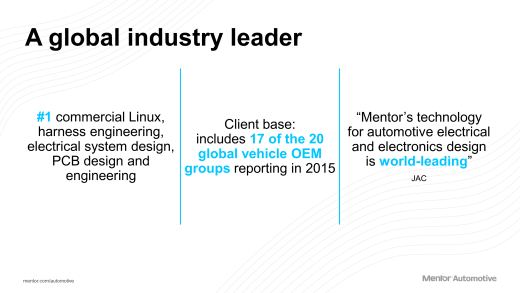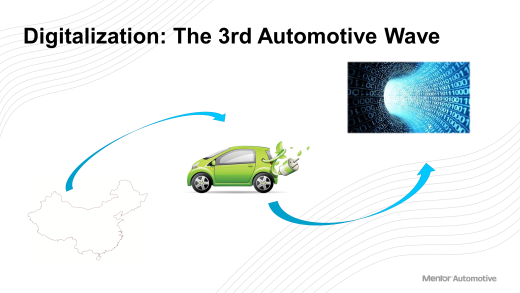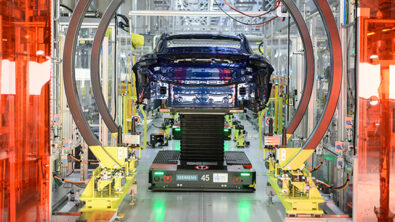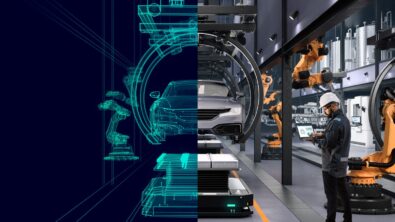Asking the wrong question about autonomous vehicles
Another week, another slate of stories on autonomous vehicles. Wall Street Journal Detroit bureau chief, John D. Stoll, reported last Tuesday on the accelerating timetable for the adoption of self-driving cars. The new target date is 2020, according to GM’s Richard Holman. A few years back, most would have said 2035.

Of course argument rages about the date that will demarcate the autonomous era. As an example, check out the April 13 PCMag column by legendary tech curmudgeon John C. Dvorak. Dvorak seems generally bullish on the technology but his column subhead says it all when it comes to the 2020 target: “Driverless vehicles are all over the news, but you’re a dunce if you believe they’ll be a regular sight in the next five years.”
I don’t know if Dvorak and Holman know each other. To me the issue isn’t who’s right here but rather how the technology is being broadly framed (and accepted) by smart people in the mainstream press. That is, few if any seem to be questioning whether self-driving cars will eventually be adopted en masse. Indeed it’s noteworthy that Dvorak, who decades back famously predicted the computer mouse would never take off and is a proud tech-skeptic, declares himself to be “a big fan.” With self-driving cars, it’s now truly a question of when, not if.
And in fact that’s true of the whole spectrum of technologies disrupting the auto industry in mildly chaotic fashion, much to the delight of the media. Last week my hometown of Austin made news when Uber and Lyft shut down their operations there. This came in the wake of the drubbing at the polls of Proposition 1, which would have overturned city regulations around ride sharing. The WSJ’s Douglas MacMillan and Rachel Emma Silverman had a nice summary, and in case you think this stuff doesn’t provoke strong feelings, spend five minutes browsing the 180+ comments that article generated. In my unscientific sampling of those comments, themselves an unreliable dataset, I know, I see far more people on the side of the tech companies than the city, despite the official vote counts.
Surely the move is a big deal to the 10,000 or so drivers for the services now missing a source of income. But it’s hard to see this as a harbinger of trouble for ride sharing in general given the widespread adoption by consumers, massive valuations and investments from the big OEMs.
My take: ride sharing is another technology that’s a mistake to frame in binary, either/or terms. That is, it’s not a question of Uber vs. taxis, a point that’s obvious here in Portland, where I spent last week meeting with Mentor Automotive colleagues from around the world.
After a tussle with city a few years back, Uber and Lyft finally got the go ahead in 2015 from the City Council to operate legally in the Rose City. The vote came “amid angry jeers from Portland taxi drivers,” wrote former Oregonian reporter Joseph Rose in his April 21, 2015 story.
Today you can pull out your phone and hail an Uber or Lyft car, or you can open use the Curb app to summon a taxi. For you as a rider, the experience is basically the same. The new technology disrupted a static industry and delivering a new use case for consumers, one that appears to be here to stay no matter the fate of any one company.

Another company that’s here to stay is Mentor Graphics. I’ve traveled to Portland several times since joining the company late last year and I’ve noticed a curious thing about Mentor’s relationship with locals. The company, which has been around since the early 1980s and is the largest tech firm headquartered in the state, is somewhat obscure in its own backyard. It’s not uncommon, after telling a waiter or store clerk downtown that I work at Mentor Graphics to hear something like: “Oh yeah, I think I got something copied and printed there once. You guys do brochures, right?”
This sort of relative anonymity isn’t all that unusual in tech, I know, though it is something of a contrast to Mentor’s burgeoning reputation in automotive industry around the world. A few points of pride — Mentor is number 1 in commercial Linux, harness engineering, electrical system design PCB design and engineering, and has a customer base that includes 17 of the 20 global vehicle OEMs. JAC Motors says “Mentor’s technology for automotive electrical and electronics design is world-leading.”
I’ll point out that JAC Motors is one of the largest automakers in China, an earlier major disruptor of global auto industry. Mentor was there as that market blossomed, just as it was for the next disruptive wave that followed — vehicle electrification.
After another good week of meetings and several months of work, I can say we’re well positioned to ride and indeed help accelerate the next big wave, surely the biggest yet. I’m talking about the digitalization of the vehicle, which includes self-driving cars, ride sharing services and much more, and is one that is reverberating daily around a world. The fact is obvious to even a casual reader of any big daily paper, Wall Street Journal, Oregonian or otherwise.
In my posts (and conversations with friendly locals and receptive reporters) I’ll try to point out something that’s perhaps not so apparent — that Mentor Automotive is quietly one of the key enablers of this transition.
Comments
Leave a Reply
You must be logged in to post a comment.



I’m and old fuddy duddy, just so you know up front. I work in the high tech industry so I’m not against progress. I judge all new technology on a cost benefit analysis and when I say cost I mean much more than dollars and cents.
Look at Tesla. How much market share do they have? I’m not sure it could even be measured yet they have had two crashes with their “self driving” cars. You want to bet everyone is going to be watching very closely. Will the company even survive? Time will tell.
On most cars you can’t even adjust the HVAC without taking your eyes off the road. This isn’t high tech or at least not high tech in a good sense.
Look at Toyota’s recent unintended acceleration problem. If memory serves me correctly, they are using 180,000 lines of code to do “fly by wire” control of the throttle. No wonder they had problems.
So how many lines of code will it take to make a “good” self driving car? Perhaps trillions! How could this possibly be safe? And that is just the software! The hardware will have to be “aircraft quality” and well maintained to avoid a disaster.
I have a low level of confidence in systems of that complexity.
Aircraft manufactures are currently in a phase where they are discovering that the transition from technology that monitors and assists pilots to pilots that monitor technology and intervene when required is a very bumpy road indeed. The automotive industry really needs to take a lesson from that experience.
I’m sure the prospects resulting from your work are very exciting but frankly, I’m afraid for all of you and the people that will be using this technology. I wish you the best of luck!